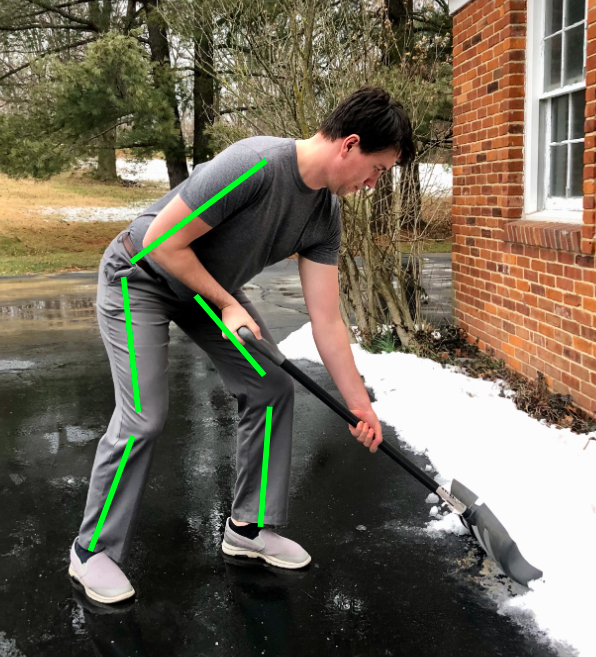
LEARN
Precision Physical Therapy Blog
Running biomechanics: Indication of ITB Stiffness
Iliotibial band (ITB) friction syndrome (a common cause of knee pain) is the second most common injury afflicting runners - second to patellofemoral pain syndrome, another type of knee pain. In runners, the ITB can become tight due to overuse of the tensor fasciae latae (TFL) muscle that attaches into it and insufficient use of other hip flexors. While sometimes it is difficult to self assess and identify if your TFL/ITB complex is tight relative to the rest of the hip flexors, there is one sign present in running that is a clear indicator of TFL tension and overuse. This is tibial lateral rotation during swing phase of running.
SI Joint Pain and Pregnancy
Our bodies are amazing. During pregnancy women are able to build a baby, as well as physically adapt to the stresses of holding the baby within us. When we pause and consider how much change a woman’s body goes through during this time, it is truly impressive. With so much change, it makes sense that there are aches and pains along the way. One of the most common pains during pregnancy is sacroiliac joint pain (SIJ).
Running biomechanics: Where should my foot strike?
While it may be frustrating to hear foot strike advice change as research is published, know that there are still some constants when it comes to biomechanics at the moment your foot hits the ground. Instead of focusing on which part of the foot contacts the ground, you may consider thinking about how far the foot contracts the ground in front of the knee and how large the angle is from the bottom of the foot to the ground. These are two things that decrease your injury risk and are very easy to identify with slow motion video. You can even assess them yourself.
Another Look at Hip Drop
Hands and knees (quadruped) exercises allow us to challenge our ability to control spine/pelvis posture with less impact from gravity. This is a great position to challenge and fine tune our movement quality and strength. Quadruped exercises are both common in strengthening programs and important for developing core stability. But many of us are not sure what makes “good form” when completing a quadruped exercise.
Running: Heel Raises, How & Why
Calf weakness is a common issue in runners and can lead to pain and injuries in the foot and lower leg. Calf weakness presents in multiple ways when assessing a runner’s gait mechanics. One of those ways is when the knee travels excessively forward of the toe at mid stance during gait (also known as increased anterior tibial translation). It is true that there are other movement problems that contribute to increased anterior tibial translation at mid stance, however the key contributor we will discuss today is calf weakness. Below you can see a still shot of normal and excessive tibial translation.
How to help your loved one shovel snow safely
All physical activities require a balance of strength, flexibility, and coordination, together they make up our movement patterns. Snow shoveling is one of those activities that require strength and coordination or it can lead to problems! Indeed what inspired me to write this blog was my husband's significantly improved snow shoveling posture following his last few years of improving his movement quality with strength training.
How Sitting Posture Impacts Movement Health
While most of the time we focus this blog on moving with good quality during fitness, it is also important to be sitting well. Poor sitting posture commonly leads to aches and pains that present themselves on a run, in fitness class, at the gym and in managing our homes. With an increased number of people working from home, navigating new work spaces and poorly fitting furniture, now is a great time to assess your sitting posture and make improvements for joint health. Today we will discuss a few of these sitting patterns that lead to movement pains, review why they matter, and postulate why they are happening.
Running: Dynamic Knee Valgus
Limited ankle range of motion and gluteal weakness: two of the most common contributors to injuries that we see in runners. These impairments often lead to a movement pattern called dynamic knee valgus and knee pain in runners. This is especially true in those who are new to running or returning after a long break. This blog will describe the knee valgus pattern: What is it? How do you fix it? Why does it matter?
Runners: Why the inside of your foot hurts - 3 potential causes
One of the more common running gait patterns associated with foot pain is excessive ankle pronation. We typically see this as the leg is accepting body weight after initial contact moving into mid stance. Ankle pronation is when the arch of the foot flattens toward the ground. Ankle pronation is a normal function of the foot and a good thing for our running. When ankle pronation becomes excessive we start to see injuries such as posterior tibialis tendonitis, achilles tendonitis, plantar fasciitis, tarsal tunnel and medial tibial stress syndrome.
Pure Barre: Foot Posture Corrections
When we grow up thinking about posture, we often think of our low back and shoulders. Rarely do we consider the posture of our feet. As the base of our whole body, foot posture can impact the alignment of many joints. The arch of the foot is a shock absorption system. It should be rigid when we need stability and flatten when we absorb shock. In general, people fall into one of three foot types: pronated, neutral or supinated.
Pure Barre at Home: Protecting the knee joint and keeping up with quad strengthening
Changing one’s fitness routine to be completed entirely at home creates a number of challenges, from crying kids, to pets licking your face, the dog hair on the rug and spotty internet. It’s been a challenge for all of us and I thought this month we could provide you with some simple modifications to make exercising at home a little more enjoyable, at least for your knees.
Pure Barre: Control your hip hinge with your gluteals.
There are many exercises across a Pure Barre class that require a hip hinge motion. Consider the arm (triceps and biceps) strengthening early in class, this requires the hips to move back, knees to slightly bend and the trunk to lean forward. This movement is essentially the ‘deadlift’ movement that many weight lifters train at the gym. This movement is also required for leaning over a table, cleaning the counter and brushing your teeth at the sink. Practicing a good quality hip hinge during Pure Barre will benefit you across your day in many different activities.
Pure Barre: Easing your wrists into a plank.
I remember back to when I first started Pure Barre. My wrists were sore and my body needed time to adapt to plank and push up postures. This is normal. Prolonged wrist extension at 90 degrees requires not only normal bony alignment, but strength in the muscles of the forearm, wrist and fingers. Today we discuss ways to ease your wrists into a plank if you are new to Pure Barre or have some differences in your joint structure that vary from normal.
Runners: Strength Training for Injury Prevention
Many people who enjoy running, find they have limited time for strength training. If you are looking to prioritize which muscle groups to strengthen, this post is for you.
Running Biomechanics: Cadence
Think back to the last time you stepped off a ledge expecting the ground to be closer than it was. Your foot and knee anticipated the ground at one distance but were straightened and stiff in the moment when your foot actually hit the ground. Consequently, the rather uncomfortable force of this unexpected impact moved up from your foot through your leg and to the rest of your body. In the field of biomechanics, we call this force moving through your body ground reaction force. …
Runners: ITB ‘Stretching’ mistakes and 3 ways to fix it!
Iliotibial band (ITB) insertion pain is a common complaint among runners. While not a serious injury, it is almost impossible to continue training when this pain presents. Most often, ITB pain in runners is associated with weak gluteals, resulting in overuse of the Tensor Fasciae Latae (TFL), a hip flexor.
Running Biomechanics: The Lean
When we learn more about each person’s daily postures, physical stresses and individual running mechanics, we discover patterns. The patterns reveal the overuse of some muscles and under use of others, they indicate where more stress is created on tissues that can become injured. While injuries like, patella femoral pain, plantar fasciitis and lower back pain sound very different, they may be associated with the same underlying faults. When a runner takes the time to learn about their patterns and how they move while they run, they can take control of their technique and limit their injuries. In this article, the first of several, we will take a close look at body posture during running.

















